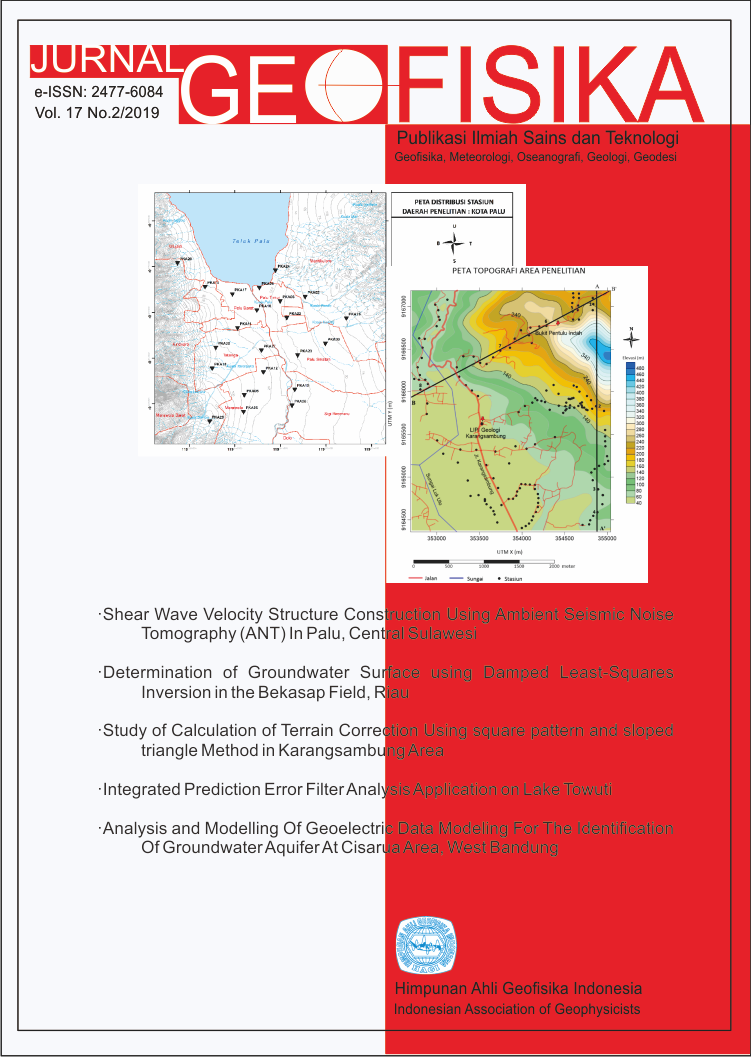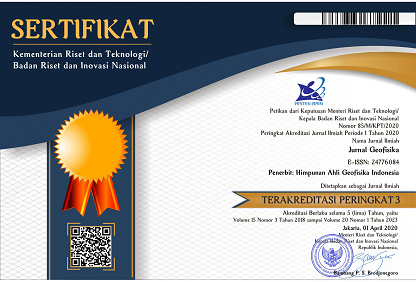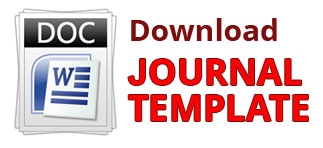Analysis And Modelling Of Geoelectric Data Modeling For The Identication Of Groundwater aquifer At Cisarua Area, West Bandung
Abstract
Groundwater is the main need of society in everyday life. Groundwater is one of renewable resources but it doesn’t mean that it can be exploitated without limit. Several factors that affect the availability of groundwater derived from nature such as geological conditions, rainfall, and green areas should be considered. Water in the soil is stored in a porous layer and has a good permeability is called an aquifer. Cisarua area is located in West Bandung regency, West Java which is a hilly area that has a topography with a slope ranging from normal to steep. The land use in this area is still dominated with plantation and forest as green area. Groundwater aquifer characteristics in that area needs to be examined and analysed for the needs of the community and agricultural business. In this research, the writer used inversion modeling technique of geoelectric data to visualize the condition of subsurface. Resistivity inversion modelling of apparent resistivity data as a result of resistivity method with Wenner-Schlumberger configuration is then carried out with least-square method. The initial model is modified in an iterative manner such that the sum of square error of the difference between the model response and the observed data values is minimized. The result of resistivity modelling is used for analysis of aquifer characteristic such as lithology, depth and structure along with considering geological reference. As the result of modelling, the area of measurement is divided into three zones which are Zone of aeration, Zone of Saturation, and endapan formasi. Zone of aeration is located at depth 0-25 m with resistivity 20-100 Ohm.m and the predicted lithology is gravel or weathered soil. Zone of Saturation (akuifer) is located at depth 25-60 m with resistivity 4-30 Ohm.m and the predicted lithology is sandstone or clay. Endapan Formasi Cibereum is located at more than 60 m from ground with resistivity more than 100 Ohm.m and the predicted lithology is sandy tuff or dry breccia.
References
Loke, M.H. (2004). Tutorial 2D and 3D electrical imaging surveys. Penang, Geotomo Software.
Dam, M.A.C. (1994). The Late Quaternary Evolution of the Bandung Basin, West- Java, Indonesia, Thesis Vrije Universiteit, Amsterdam, 252 halaman.
Van Zuidam. (1983). Guide to Geomorphologic- Aerial Photographic Interpretation and Mapping, International Institute for Geo-Information Science and Earth Observation, Enschede
Martodjojo, S., (2003). Evolusi Cekungan Bogor, Jawa Barat, Disertasi S3, Fak. Pasca Sarjana, Penerbit ITB, Bandung, 238 halaman.
Koesoemadinata, R.P . dan Hartono, D. (1981). Stratigrafi dan Sedimentasi Daerah Bandung. Proceedings PIT X Ikatan Ahli Geologi Indonesia, Bandung.
Todd, D. K. dan Mays, L. W. (2005). Groundwater Hydrology, John Wiley & Sons, New Jersey, 636 halaman.

This work is licensed under a Creative Commons Attribution 4.0 International License.
The copyright of all articles belongs to the authors. All other copyrights is held by the Journal











